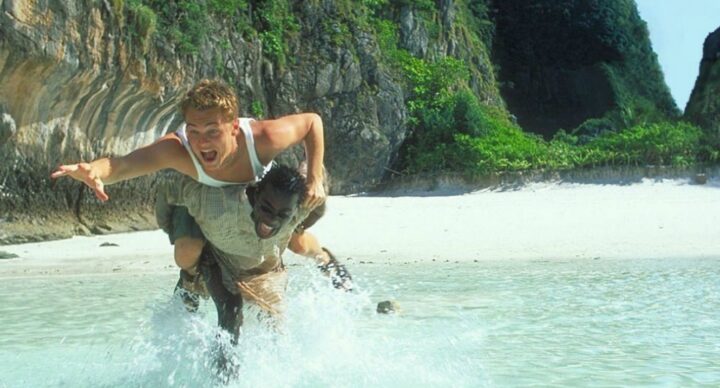
The return of tourism to the idyllic Thai beach made popular by DiCaprio
Although with limited capacity and without being able to bathe, tourists have enthusiastically returned to the famous Thai beach made popular by Leonardo DiCaprio’s movie “The Beach”, after more than three years of closure due to environmental deterioration.
“Beautiful, the most beautiful place I’ve seen in Thailand,” Facundo, an Argentine tourist, tells Efe just before going down to the white sand beach and turquoise waters located on the island of Phi Phi Leh, in southwestern Thailand. .
As in the famous scene of “The Beach” (2000), the tourists descend to the sand amazed by the beauty of the landscape of tropical vegetation and hills that surround the beach in Maya Bay as if they were calcareous giants.
“The only thing we know is that a movie had been filmed and we didn’t know it was a nature reserve,” explains Facundo, who says he doesn’t mind not being able to swim in the bay if it’s to protect the environment.
Natural Park
Phi Phi Leh is one of the six islands of the Phi Phi archipelago, which is part of the Hat Noppharat Thara-Mu Ko Phi Phi Nature Park in the Andaman Sea and belongs to the province of Krabi.
The park is protected with the exception of Phi Phi Don, the largest island in the archipelago, which is home to several hundred hotels along its 9.73 kilometres.
The place was already a tourist destination 40 years ago, but the film starring DiCaprio, based on the homonymous novel by Alex Garland, made this beach world famous and became the main target of mass tourism in the country.
The natural park, mainly due to Maya Bay, became the most lucrative in the country, reaching 1.9 million visitors in 2017, more than 80 percent foreigners, and revenues of over 669 million bat ( 19.89 million dollars or 18.24 million euros).
However, the excess of tourists, boats and launches, partly from Phuket and Krabi, contributed to the deterioration of the environment, mainly in the paradisiacal Maya Bay, where up to 92 percent of the coral died.
An average of 5,000 people visited the famous beach daily, where queues formed like in a supermarket and boats and launches dropped anchor in the bay without caring for the corals.
In 2018, the authorities decided to close Maya Bay to the public to rehabilitate the marine environment and it opened in January 2022, some three and a half years later.
The difference now is that only 375 people are allowed in at the same time, for an hour or so, and bathing in the bay is prohibited.
Slow recovery
“The coral has grown from 8 to 15 percent and continues to increase. Blacktip sharks have returned to the bay (…) The coral grows very slowly,” explains Thon Thamrongnawasawat, a marine biologist at Kasetsart University. in Bangkok and adviser to the environmental authorities.
“There are no shortcuts. It took us 20 years to close it (the bay) and now it will take us 10 or 15 years to return to its state of 40 years ago,” adds the expert, who describes the regulations as sufficient to protect the bay, although he warns of the risk of warming due to the climate crisis.
The restrictions due to the covid-19 pandemic have contributed to the improvement of the natural environment in Thailand by causing tourism to drop from 39.8 million visitors in 2019 to 420,000 in 2021, which reduced its environmental impact.
In the Phi Phi park, covid-19 caused visitors to fall in 2021 to 239,841, 95 percent of them Thai, and revenues to stay at 15 million bat (446,700 dollars or 408,977 euros), according to the data. officers.
The progressive recovery of tourism implies an increase in visitors to the archipelago, with dozens of boats and launches and hundreds of people snorkeling around Phi Phi Leh, except in the protected Maya Bay.
Even with the capacity limit, it is estimated that more than 4,000 tourists visit the beach daily, which is similar to the average before the closure in 2018.
The manager of the SAii Phi Phi Island Village hotel in Phi Phi Don, Chao Treenawongse, acknowledges that the high number of visitors still poses a risk to the natural environment, since the bay is a small part of the park, and proposes that the boat access.
“Perhaps limiting (boat access) to guests from Phi Phi (Don) Island” and banning boats from Phuket and Krabi, says Chao, admitting it is difficult to balance tourism and environmental protection.
Categories: General
